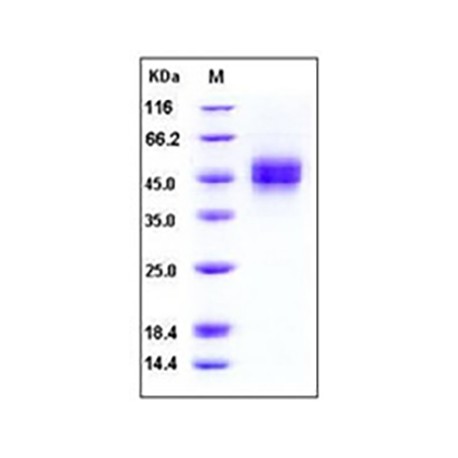No products
Product successfully added to your shopping cart
There are 0 items in your cart. There is 1 item in your cart.
Proteins and Enzymes
- Protein Control Ligand
- Pathway Inhibitors
- Enzyme Inhibitors
- Kinase Inhibitors
- Protease
- Synthase
- p18
- p38
- p53
- p70
- p90
- Peptidase
- Carboxyl and Decarboxylases
- Ceramide Turnover Enzymes
- Chromatin Modifying Enzymes
- Cyclic Nucleotide Turnover Enzymes
- Glycerophospholipid Turnover Enzymes
- Hydroxylases
- Ubiquitin-Activating Enzyme
- Adenosine Deaminase
- Clathrin
- Nuclease
- p68
- ACE
- COX
- DHFR
- Neprilysin
- NF-κB
- RAF
- RAS
- Reductase
- ROR
- Topoisomerase
- Transferase
- Protein Inhibitors
- Transporter Inhibitors
- Cell Inhibition
- Synthase
- Receptor Tyrosine Phosphatases (RTP)
- AChE
- Peptidase
- Autophagy
- Toll-Like Receptor (TLR)
- Enzyme Inhibitors
- Function Modulators
- Activators
- G Protein-Coupled Receptor Ligands
- 5HT Receptors
- Adrenoceptor
- Angiotensin Receptor
- Cannabinoid Receptors
- CCK Receptors
- DA Receptors
- EAA Receptors
- Ghrelin Receptors
- GABA Receptors
- Histamine Receptors
- Leukotriene Receptors
- Metabotropic Glutamate Receptors
- Motilin Receptors
- Muscarinic Receptor
- Neuropeptide Receptors
- Opioid Receptors
- Orexin Receptors
- Orphan Receptors
- Prostanoid Receptors
- Proteinase-Activated Receptors
- Purinergic Receptors
- Ryanodine receptor
- Sigma Receptors
- Thrombin Receptor
- Vaniloid Receptor
- VIP and PACAP Receptors
- Neurotensin Receptors
- Urotensin Receptor
- Imidazoline receptor
- SMO Receptors
- Apelin Receptor
- β-arrestin/β2-adaptin
- KDM4
- Glucocorticoid Receptor
- Laminin Receptor
- AHR
- Amylin Receptor
- Bombesin Receptor
- Bradykinin Receptor
- CFTR
- CGRP Receptor
- CRFR
- Endothelin Receptor
- Ephrin Receptor
- Farnesoid X receptor (FXR)
- Glucagon Receptor
- Nuclear Receptor Ligands
- GDNF Receptors
- TNF Receptors
- Transcription Factors
- Chemokines
- Cytokine Receptors
- Biomarkers and Buffer Solutions
- Molecular Probes
- Stem Cell Research
- Alzheimer's Disease
- Apoptosis
- Cancer Research
- Epigenetics
- Metabolites
- PET/SPECT Imaging Precursors
- Customized Screening Library
- Ultra Pure Pharmacological Standard
- Tissue Microarray (TMA)
- Proteins and Antibodies
- Primary Cells
- ELISA KIT
- Natural Products
- Lab Equipments
- Humanized Mice for PDX Platform
- Rare Chemicals
- Custom Synthesis
- Antibacterial
- Antifungal
- Antioxidant
- Antiviral
- Molecular Glues
- PROTAC Linker
- SARS-CoV
 View larger
View larger Human MICB Protein (His Tag)
10759-H08H
Activity: Immobilized human MICB-His (Cat:10759-H08H) at 10 μg/ml (100 μl/well) can bind S4-Fc3L3-NKG2D (Cat:10575-H01S), The EC50 of S4-Fc3L3-NKG2D (Cat:10575-H01S) is 0.52-1.2 μg/ml.
Please ask for quote for unit smaller than 1 mg
Molarity Calculation Cart®
HOW TO ORDER
Data sheet
| Molecular Weight | The recombinant human MICB consists of 287 amino acids and has a predicted molecular mass of 33 kDa. In SDS-PAGE under reducing conditions, the apparent molecular mass of rh MICB is approximately 45-50 kDa due to glycosylation. |
| Storage Condition | Samples are stable for up to twelve months from date of receipt at -70℃. Store it under sterile conditions at -20℃ to -80℃. It is recommended that the protein be aliquoted for optimal storage. Avoid repeated freeze-thaw cycles. |
| Purity | 98% as determined by SDS-PAGE |
More info
Protein Construction: A DNA sequence encoding the extracellular domain of human MICB (NP_005922.2) (Met 1-Gly 298) was expressed with a C-terminal polyhistidine tag.
Formulation: Lyophilized from sterile PBS, pH 7.41. Normally 5% - 8% trehalose, mannitol and 0.01% Tween80 are added as protectants before lyophilization. Specific concentrations are included in the hardcopy of COA.2. Please contact us for any concerns or special requirements.Please refer to the specific buffer information in the hard copy of CoA.
Reconstitution: A hardcopy of COA with reconstitution instruction is sent along with the products. Please refer to it for detailed information.
MICB Background Information: MHC class I polypeptide-related sequence B, also known as MICB, is a heavily glycosylated protein serving as a ligand for the type I I receptor NKG2D. MICB shares 85% amino acid identity with MICA, a closely related protein, both of which contain three extracellular immunoglobulin-like domains, but without capacity to bind peptide or interact with beta-2-microglobulin. acting as a stress-induced self-antigen, binding of MICB to the NKG2D receptor activates the cytolytic response of natural killer (NK) cells, CD8+αβ T cells, and γδ T cells on which the receptor is expressed. MICA/B are minimally expressed on normal cells, but are frequently expressed on epithelial tumors and can be induced by bacterial and viral infections. MICA/B recognition thus is involved in tumor surveillance, viral infections, and autoimmune diseases.
References:
- Bauer, S. et al.,1999, Science. 285:727-729.
- Braud, V.M. et al.,1999, Curr. Opin. Immunol. 11: 100-108.
- Groh, V. et al.,2001, Nature Immunol. 2: 255-260.
- Stephens, H.,2001, Trends Immunol. 22: 378-385.
- Borrego, F. et al.,2002, Mol. Immunol. 38: 637–660.
- Groh, V. et al.,2002, Nature. 419:734-738.

